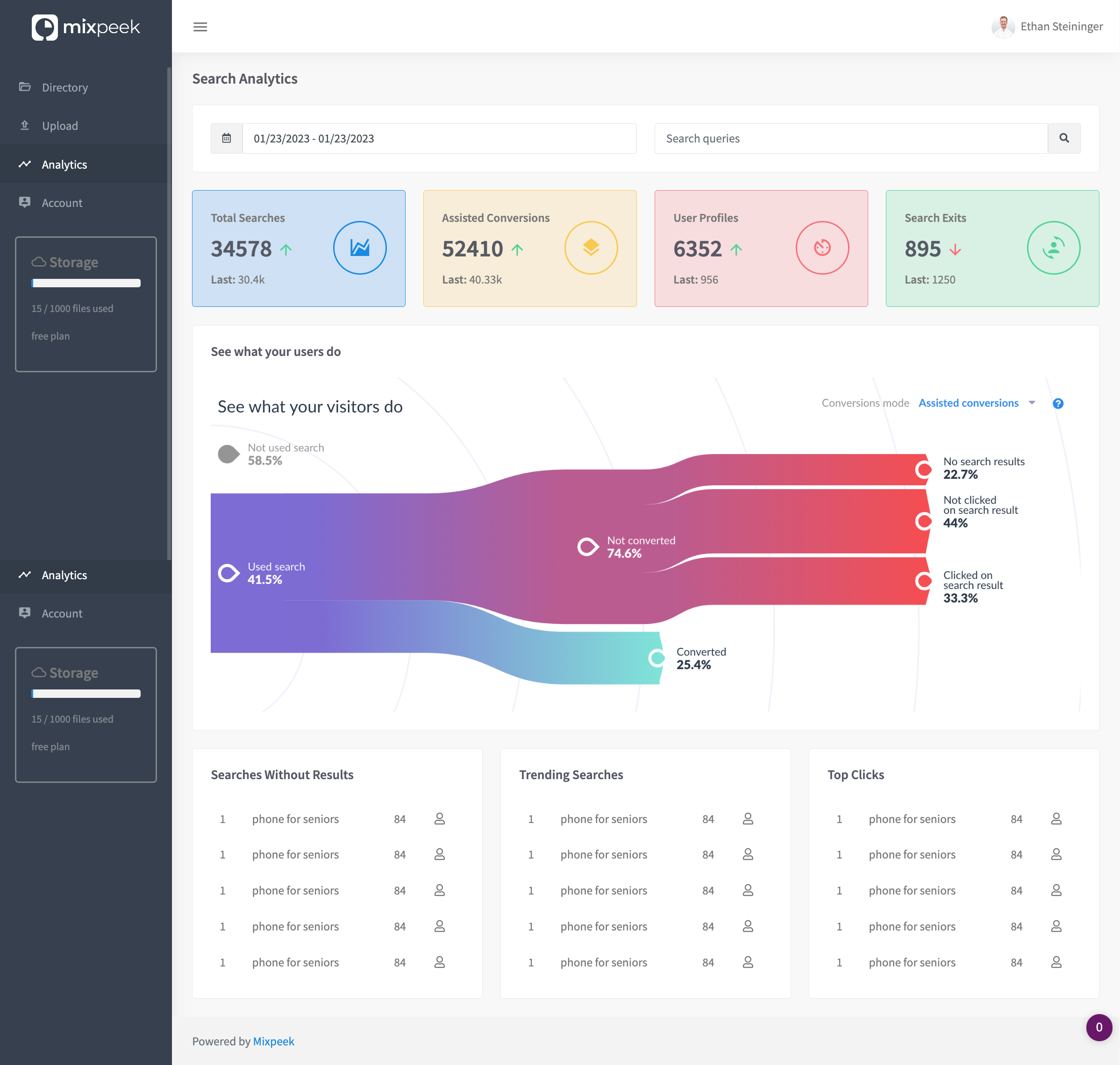If you're not using your application's search analytics to drive your product roadmap, you're doing it wrong.
When's the last time you went to a website that didn't have a search bar front and center? Hopefully you knew exactly what you were looking for. If so, you likely even used a search engine to get there... ahem Google.
By analyzing the data generated by users' searches, you can gain valuable insights into what features and functionality they are looking for, and use that information to inform your product roadmap.
Here are several tips, and implementation details to using your search analytics for enriching your product roadmap.
pip install mixpeekfrom mixpeek import Mixpeek
mix = Mixpeek(api_key="API_KEY")Track Top Queries
By monitoring the most frequently searched terms, you can identify which features and functionality are in high demand. Use this information to prioritize development and ensure that your product meets the needs of your users.
# 100 queries sorted by volume
mix.analyze(sort={"count":-1}, limit=100)Example: An e-commerce company could use this code to identify the most popular search terms used by customers on their website. This information could be used to improve the search functionality, optimize product placement and visibility, or even to inform their inventory and purchasing decisions.
Identify Gaps
If users are searching for specific features or functionality that your product doesn't currently offer, that's a clear indication that there's a gap in your product. Use this information to identify areas where you can improve and add new features to your application.
# 100 queries where there were no results sorted by volume
mix.analyze(sort={"count":-1}, result_count=0, limit=100)Example: A streaming media company could use this code to identify which TV shows or movies are being searched for by users but are not currently available on their platform. This information could be used to negotiate new licensing agreements or acquire new content to meet the demand of their users.
Monitor Trends
By keeping up with emerging trends and understanding the language your customers use, you can improve your product descriptions and titles to match the way people are searching for your products. This can also help you expand your catalog to better meet customer demand.
# queries grouped by date
mix.analyze(group_by="date")Example: A news website could use this code to track search trends and identify breaking news stories that are gaining popularity. This could allow them to quickly report on hot topics and increase the visibility of their articles.
Improve Navigation
Analyze how users are searching for content within your application and use this information to improve the navigation and organization of your product. Make it easy for users to find what they're looking for, and they'll be more likely to stick around and use your product more.
# highest volume queries grouped by tag
mix.analyze(group_by="tag")Example: A social media platform could use this code to identify which categories of content are most popular among users. This information could be used to improve the navigation and organization of the platform, making it easier for users to find the content they are looking for.
Compare Similar Paths
By tracking user behavior signals such as search queries and page views, you can paint a vivid picture of each customer's journey and use that information to personalize the experience. Mixpeek's machine learning can also help understand patterns in customer behavior and predict user intent.
Discover Intention
You can use Mixpeek's semantic search feature to match user's intention to search results. This involves understanding the meaning behind a customer's search query and using that information to return the most relevant results. This can be especially useful for customers who may not use the exact terminology for a product or may use synonyms.
All of this and more in a simple visual dashboard


